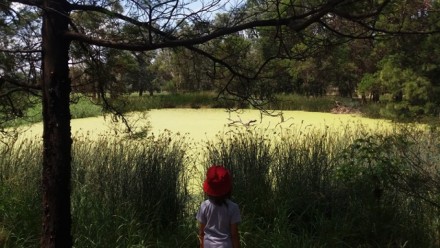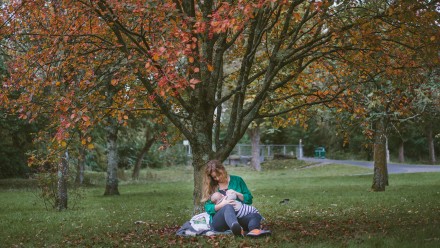Australia, you must do better in protecting and supporting breastfeeding
Share
Australia needs to do much better in “protecting, promoting and supporting breastfeeding”, according to lactation and infant health experts Naomi Hull, Dr Jennifer Hocking, Andini Pramono and Dr Julie Smith. Below, the authors identify many gaps in funding, policies and services, and call for government leadership in regulating marketing of commercial milk formula, amongst other recommendations.
A new global benchmarking report released this week shows Australia near the bottom of the global ladder for protecting, promoting and supporting breastfeeding despite a 2019 national strategy to enable it.
Nearly all new mothers in Australia initiate breastfeeding, but many breastfed babies are given commercial milk formula before leaving hospital, and many more stop breastfeeding altogether within a few months.
Reasons for this include perceived insufficient milk supply, breast and nipple pain or need to return to work/lack of maternity leave. Aboriginal and Torres Strait Islander babies and babies from the least socioeconomically disadvantaged areas based on the Socio-Economic Indexes for Areas (SEIFA) are most likely to experience early cessation of breastfeeding.
Lack of support for breastfeeding is one of the main problems. Australian women’s breasts are not the problem – they can make sufficient milk. International comparisons illustrate the issue; where there is good support, breastfeeding rates are higher.
Measuring progress
The World Breastfeeding Trends initiative (WBTi) is a useful tool for providing an internationally comparable assessment of necessary supports for breastfeeding, using key indicators. Australia’s 2018 WBTi report was included in the Australian National Breastfeeding Strategy (ANBS) released in 2019.
The WBTi measures and monitors the success of programs implemented in different countries to support infant and young child feeding. The tool is made up of indicators which relate to policy and programs. Each indicator is scored out of ten giving a total possible score of 100. Changes in each indicator can be tracked through ongoing assessments every few years.
The WBTi assessment tool offers solutions by identifying strengths and weaknesses in a nation’s breastfeeding policy and programs through a collaborative, community-based approach.
Mixed performance
A new WBTi assessment of Australia is available, which shows that not much has changed in Australia since the last assessment five years ago.
Australia continues to perform poorly on breastfeeding policy for multiple reasons, firstly because there are still no reliable national figures on breastfeeding trends in Australia.
Nevertheless, there is some good news. Australia has improved slightly on the WBTi report results in 2018 – from a total report card score of 25.5/100 in 2018 to 33/100 in 2023. This is due to the 2019 ANBS which contributed 1.5 points to the report card, and some of the other indicators have been updated and are measured differently.
The bad news is that there is still no specific federal or jurisdictional budget to implement the Strategy four years later, thus reducing Australia’s score.
Motherhood statements such as “breast is best” are not enough to enable breastfeeding but are so common that a PhD thesis has been written about the “institutional void” into which breastfeeding strategies disappear – to be reshaped by powerful bureaucratic, health professional, and industry actors.
For example, 11 years ago during the 2010 Australian National Breastfeeding Strategy, Australian health ministers issued a press release encouraging hospitals to adopt Baby Friendly Health Initiative (BFHI) standards. Even fewer hospitals now than then have such accreditation, and exclusive breastfeeding at hospital discharge has declined.
The Strategy arose from a 2007 parliamentary recommendation for funding “to facilitate the accreditation of all maternity hospitals”, to which the Australian Government had responded that it would “consider supporting the BFHI in light of the outcomes of the Government’s Maternity Services Review”.
Its final progress report simply cited the 2012 health ministers press release (which is no longer available on the linked website).
The new WBTi report highlights actions that have been taken since the 2018 WBTi report and how Australia’s mothers and babies are faring when it comes to breastfeeding.
Apart from continuing existing funding for the highly regarded Australian Breastfeeding Association’s National Breastfeeding Helpline, as well as additional funding for a medical committee to develop human milk banking and a research grant on building resilience and supporting families during bushfire emergencies, there has not been much progress.
Despite a previous significant national achievement of support for public and private hospitals to implement the 10 Steps to Successful Breastfeeding from the World Health Organisation (WHO)/UNICEF Baby Friendly Hospital Initiative (BFHI), fewer women than ever experience its evidence-based Ten Steps to Successful Breastfeeding.
Only 22 percent of Australian hospitals that provide maternity services are accredited BFHI facilities.
This is a stated key priority of the ANBS and a central component of effective interventions to support women’s breastfeeding goals. Yet BFHI accreditation continues to stagnate, and specific resources (including funding and time) have still not been allocated to ensure hospital staff receive adequate breastfeeding training.
Commercial influence
We have not yet seen any meaningful action to prevent the commercial milk formula industry targeting health professionals as promised in the ANBS.
The 2022 WHO report on ‘How the marketing of formula milk influences our decisions’ showed how health professionals are a clear target for the industry because it is known that they can influence parents’ infant feeding decisions.
The commercial milk formula industry provides education and information to health professionals filling the gap that is left by lack of formal and unbiased education on infant feeding for health professionals. Currently, it is only midwives who have a requirement for breastfeeding content in their curriculum.
Universities vary as to how much infant feeding information they include in midwifery courses, if any at all. And we know that families only access support from midwives for a very short period in the post-natal period. They also access Maternal Child and Family Health Nurses and general practitioners among others, who may not have as detailed knowledge on breastfeeding.
Exploitative and aggressive marketing of commercial milk formula remains rampant. Another taxpayer funded Department of Health and Ageing review – the fourth in twenty years – of the Marketing of Australian Infant Formula Agreement (MAIF) is in progress. This further delays an adequate policy response to the 2007 Federal Parliamentary inquiry (Best Start Report) which called for full implementation of the WHO’s International Code of Marketing of Breastmilk Substitutes (The Code).
The recent Lancet Series on Breastfeeding showed the egregious marketing to parents’ which underpins the $55 billion a year baby milk industry. Despite heavy scrutiny by the ACCC in 2021-22, and recommendations to government for policy action by the ACCC, a new AI powered monitoring tool, Virtual Violations Detector, shows entrenched bad behaviour by Australian commercial milk formula companies that continue to breach the MAIF Agreement and The Code.
Government leadership needed
While paid parental leave has been extended with clear and welcome benefits for single parents, other changes with leave for partners rolled in, which may mean mothers need to take unpaid leave in order to continue exclusive breastfeeding to six months, or breastfeeding to 12 months, as recommended by Australian health authorities. Paid maternity leave of sufficient duration and pay level is important for women’s recovery from childbirth, mental wellbeing and for maintaining breastfeeding during the first year.
Its introduction in Australia is especially critical for women in precarious or low paid jobs or with unsupportive employers. Ensuring breastfeeding-friendly workplaces is another area where WBTi assessment found no improvement evident since 2018, despite the national breastfeeding strategy making it a priority for all Australian government departments.
The WHO recommend exclusive breastfeeding for six months and continued breastfeeding for two years or more. This is because the method of feeding infants and young children plays a crucial part in their short- and long-term health and development. Not being exclusively breastfed increases an infant’s chance of illness and hospitalisation, and of later life chronic disease regardless of whether they live in a rich or poor country.
How infant and young children are fed can also impact their food security and survival during natural disasters and emergencies. For women, early cessation of breastfeeding increases their risk of later life breast and ovarian cancer and chronic diseases including cardiovascular disease, and Type 2 diabetes.
Societal commitment to support women to breastfeed for the health benefits it confers on the population requires leadership and funding from our governments with regulatory protection of breastfeeding from the unethical and exploitative commercial milk formula industry marketing.
Meanwhile, gaining new ground due to the US formula crisis, the Australian commercial milk formula industry has engaged in heavy lobbying of Australian government officials and received Commonwealth government funding for marketing into low and middle countries in South-East Asia. Our neighbouring countries are forced to utilise valuable resources to regulate marketing of commercial milk formula in their countries to protect their population from Australian exports.
Amidst multiple global nutrition and health crises, including obesity and related chronic disease, putting babies before bottom lines should be a priority in Australia as well as overseas.
*This article was first published by Croakey Health Media.
About the authors
Naomi Hull is a Registered Nurse, with a Master of Public Health in Nutrition. Hull is an experienced Lactation Consultant.
Dr Jennifer Hocking is a Registered and practising midwife.
Andini Pramono is a Lactation Consultant, with a Bachelor of Public Health. Pramono is also a PhD candidate at ANU.
Dr Julie Smith is an Honorary Associate Professor at National Centre of Epidemiology and Population Health at ANU. Smith’s research has focussed on the economics of breastfeeding and regulation of markets in mothers’ milk, and gender analysis of Australia’s taxation and fiscal policies.











